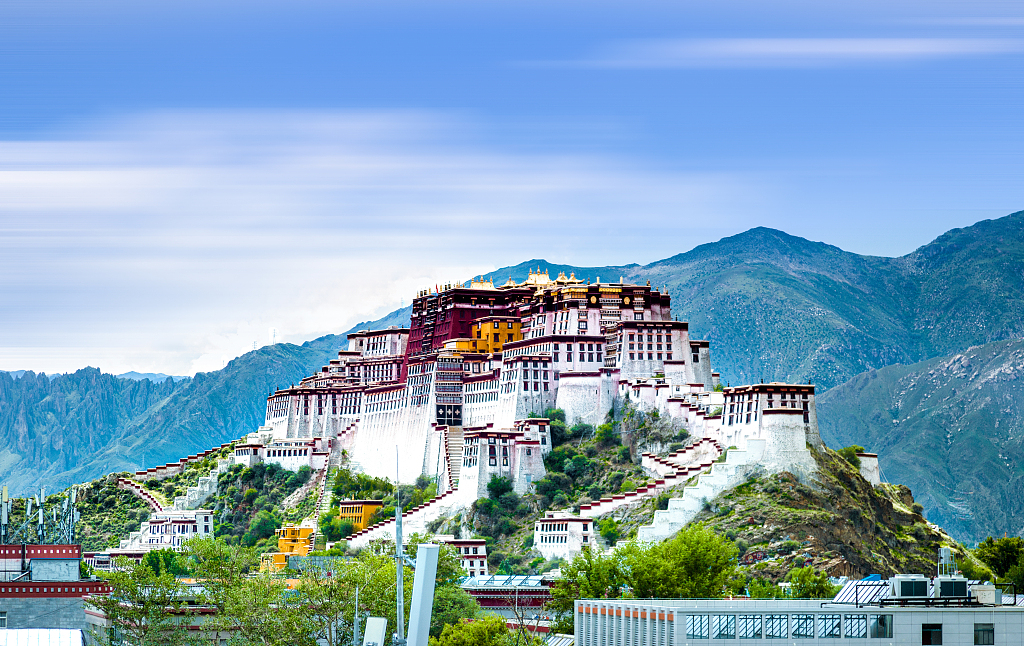The largest afforestation project in Xizang Autonomous Region to green the mountainsides along the Lhasa River Valley has contributed to the ecological conservation of the Qinghai-Xizang Plateau, also known as the "Roof of the World."
The afforestation project in the northern and southern mountains of Lhasa, the region's capital, was launched in 2021. So far, the project has added about 23,500 hectares of new forests with over 47 million of trees to the city.
In Nanshan Park, or the southern mountain park, located beside the Lhasa River and south of the iconic Potala Palace, lush trees and murmuring streams create a picturesque landscape.
"When I first arrived in Xizang in the early 1990s, the land from the west side of the Potala Palace to the western suburbs was mainly for vegetable farming. In the mountains around Lhasa, there were only small amounts of grass. The afforestation project in the northern and southern mountains has increased the artificial forest area by dozens of times," said Li Baoping, a senior official of the Lhasa Municipal Forestry and Grassland Bureau.

The Potala Palace in Lhasa, southwest China's Xizang Autonomous Region. /CFP
The Potala Palace in Lhasa, southwest China's Xizang Autonomous Region. /CFP
Xizang aims to transform Lhasa into an ecologically livable place with "green mountains surrounding the north and south, and green water encircling the ancient city." To achieve this, Xizang has made long-term endeavors.
Although Lhasa is geographically similar in latitude to Shanghai, its high altitude and arid and cool climate necessitate planting tree species with drought and frost resistance and pouring larger amounts of water during the trees' growth. The Lhasa River provides water for the irrigation uphill.
"These trees and grass are my life to me. Now, with trees having the next generation and wild animals thriving on the mountains, arrivals of tourists are increasing," said Bkra Shis, a staff member of the Nanshan Park.

The Lhasa River Valley in summer. /CFP
The Lhasa River Valley in summer. /CFP
The afforestation project, set to be completed by 2030, covers an area of around 138,000 hectares. Upon completion, it will add 49.8 million tonnes of water storage, sequester 230,000 tonnes of carbon annually, and generate 190,000 tonnes of oxygen each year.
China recognizes the Qinghai-Xizang Plateau as a crucial ecological security barrier and specifically enacted a law on ecological conservation on the plateau in 2023. This legislation requires relevant local governments to fulfill their responsibilities in ecological restoration and protection, ecological risk prevention and control, optimizing industrial structure and layout, and maintaining the ecological security of the plateau.
So far, 50 percent of Xizang's land area has been included within the eco-environmental conservation red lines, with a total of 47 nature reserves covering a total area of over 410,000 square kilometers.
In addition to transforming the ecological environment, the afforestation project is also a source of increased income for farmers and herders. Over the past seven years, an average of 537,000 ecological protection jobs have been created for the public each year.
(Cover image via CFP)